Exploring the Relationship Between Handlebar vs Stem Length
It turns out that stems can be too short. Fabien Barel was on the ground floor of rider-forward geometry while he was riding for Mondraker back in 2012. I remember when he rolled out on a pre-production Foxy that had a massively long top tube, a steep-for-the-time seat tube angle and a crazy, 15mm-offset stem. I peppered Barel with questions about the stem while we rode together on his home trails near Les Gets, France.
When asked why Mondraker stopped at 15 instead of making a zero-offset stem, the former World Champion was candid: “We tried zero offset and the steering was too unstable. Fifteen is as far as we can go, and maybe twenty is better.”
When asked why Mondraker stopped at 15 instead of making a zero-offset stem, the former World Champion was candid: “We tried zero offset and the steering was too unstable. Fifteen is as far as we can go, and maybe twenty is better.”
When is a Stem Too Short?
Today, stem lengths have crept back from 50 to 35 millimeters (20 if you add Pacenti’s P-dent stem and bar combination). I was reminded of Barel’s discovery after I switched handlebars and experienced a similar instability. The new handlebar had similar numbers, but I would later discover that, in conjunction with the bike's 35 millimeter stem, my hands were in line with the steering axis – a position, I assumed, that approached Mondraker’s zero-offset stem. Curiosity led me to measure a number of stem and handlebar combinations and to the discovery that the brand of handlebar you choose, and the angle that you set it can alter the effective length of your stem by over 50 percent.
Working with the theory that a mountain bike’s steering is somehow stabilized when the rider’s hands lay ahead of the steering axis, I chose a handlebar with a different bend that did just that, and the bike’s steering returned to normal. The difference in hand position was only ten millimeters.
Oddly, I raced motorcycles in various disciplines, and almost every handlebar put my grips at or behind the steering axis. No instability issues there. The difference seemed to be that you grip a moto with your legs, which isolates your body from steering inputs. While riding a mountain bike, however, your contact points are most often the handlebar and pedals. Most of the time, there is forward pressure on the grips, so it stands to reason that having the grips in front of the steering axis would cause the steering to self-center, which would become a stabilizing force. Fabien Barel is a smart guy.
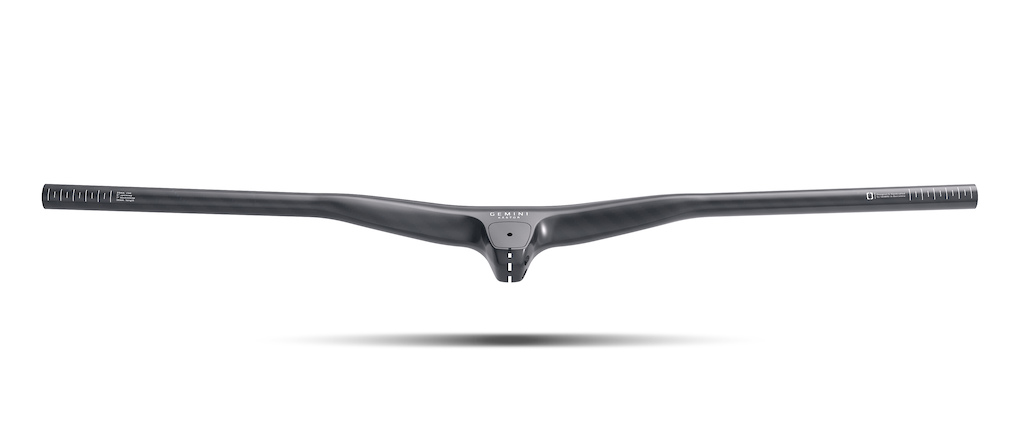
Gemini's Kastor one piece carbon handlebar illustrates how the bar and stem operate as one simple lever. Gemini photo
What the Handlebar Has to Do With This
Before we get any further into this discussion, think of the stem and handlebar to be one welded structure, instead of two components. In reality, your hand position, relative to the fork’s steerer tube are the only components in the equation that matter. Imagine three points of a triangle, two at the middle of each grip and one at the center of the stem’s headset adjustment bolt. That’s a very obtuse triangle, and now that 50 millimeter stems are considered to be long, there are less than 30 millimeters of wiggle room for rotational adjustments and sweep-back angles before those three lines converge into Barel’s danger zone.
Geeking in the Basement Workshop
Just for fun, I amassed a number of handlebars for a test. I made a table/fixture that held a fork steerer tube at an imaginary 66-degree head tube angle. I mounted up a 45-millimeter stem and cobbled together some measuring devices to ensure that each bar was set at the same up-sweep angle of five degrees – the average angle that most bar makers (and riders) prefer. Some lock-on grips allowed me to measure each bar at a 780 millimeter effective width for consistency. I made reference marks at the center of each grip and the stem bolt, and then stretched a length of gear cable between them to ascertain the distance that the hands were positioned ahead of the steering axis (center of the stem's headset-adjustment bolt). Here’s what I discovered:
Rules: All handlebars were measured from the center of the grips (66mm inboard) with the outer ends of the grips at set at 780 millimeters wide. The upsweep for all bars was adjusted for the first part of this experiment at five degrees. The Race Face Atlas was recommended at 4 degrees. All others (where stated) were listed at five degrees. The Easton Havoc and Race Face Turbine 2 were chosen because they had 35mm clamp sections. A 40mm stem was used and their effective lengths have been noted in the chart. The manufacturer’s back-sweep is stated in the text. The numbers, rounded off to the nearest millimeter, are the distance forward from the center of the steering axis – that’s your effective stem length
Handlebar-Adjusted Stem Length
Handlebar
Syntace Vector Superlight 8
Syntace Vector Superlight 12
Race Face Atlas
Race Face Turbine 2
Renthal Fatbar
Gamut Cillos DH
Easton Havoc Aluminum
Syntace Vector Superlight 8
Syntace Vector Superlight 12
Race Face Atlas
Race Face Turbine 2
Renthal Fatbar
Gamut Cillos DH
Easton Havoc Aluminum
Back-Sweep
8º
12º
8º
8º
7º
7º
9º
8º
12º
8º
8º
7º
7º
9º
Effective Stem Length
30mm
7mm
23mm
22mm*
26mm
24mm
21mm*
30mm
7mm
23mm
22mm*
26mm
24mm
21mm*
The takeaway here is that handlebars with similar back and up-sweep numbers often do not position the rider in the same place. Where the bends occur in the span of the handlebar create different effective stem lengths. The differences are not huge, but they can be significant. If Fabian Barell’s observations are correct, and I believe they are, a handlebar-adjusted stem length around 20 millimeters would be as short as you’d want.
These numbers were derived using a 45-millimeter stem. So if you are running a 50, you’d need to add 5 millimeters to the effective stem lengths of each handlebar and conversely, subtract 10 millimeters if you were using a 35-millimeter stem. Using a stem that short would make it easy to arrive at a bar/stem combination that would put your grips behind the steering axis, and that's probably not good.
Using the “string” measurement technique that I demonstrate here can help you determine whether your handlebar and stem combination is in the ballpark, or if that combination warrants experimenting with a different length stem. You might be surprised to discover that your 50-millimeter stem is tinier than you believed it to be.
Stem-length Adjusted for Handlebar Angle
How much you rotate your handlebar to suit your hand position affects the calculated length of your stem to a much greater degree than the particular bend configuration of your bar. Twenty-millimeter rise bars are popular these days, so I used the Race Face Turbine 2 to demonstrate. I rotated the bar to produce seven, five, and three degrees of up-sweep. Here's how it came out:
Handlebar: Race Face Turbine 2
8º back, 20mm rise, 5º up
Rotated to 7º up = 36mm
Rotated to 5º up = 22mm
Rotated to 3º up = 15mm
8º back, 20mm rise, 5º up
Rotated to 7º up = 36mm
Rotated to 5º up = 22mm
Rotated to 3º up = 15mm
You can see that when you rotate your bar to achieve your sweet spot it can dramatically change the effective length of your stem. That change would be greater with a higher bar like the 30mm-rise Renthal or Gamut.
So, What Does All This Mean?
First and foremost, if you always run the same brand, model and width of handlebar, and are careful with your setup, then switching to a different length stem should provide instant and clear feedback. You’ll either like it, or you won’t, and you'll know the cause.
What this experiment suggests, is that the trend towards shorter stems has narrowed the range of rotational adjustment and hand positions, and that makes it easier to fall outside of stable parameters
First and foremost, if you always run the same brand, model and width of handlebar, and are careful with your setup, then switching to a different length stem should provide instant and clear feedback. You’ll either like it, or you won’t, and you'll know the cause.
What this experiment suggests, is that the trend towards shorter stems has narrowed the range of rotational adjustment and hand positions, and that makes it easier to fall outside of stable parameters
Here is a simple tool that you can use to assess your starting point and, should you choose a different model of handlebar, or entertain a change in stem length or rotation, you can assess the ramifications in a minute or two with a piece of string and a ruler. If your set-up is golden, you’ll be able to reproduce it with any number of bar and stem combinations. If it's not, you can determine why and make positive adjustments towards a solution.
Author Info:
Must Read This Week
Sign Up for the Pinkbike Newsletter - All the Biggest, Most Interesting Stories in your Inbox
PB Newsletter Signup
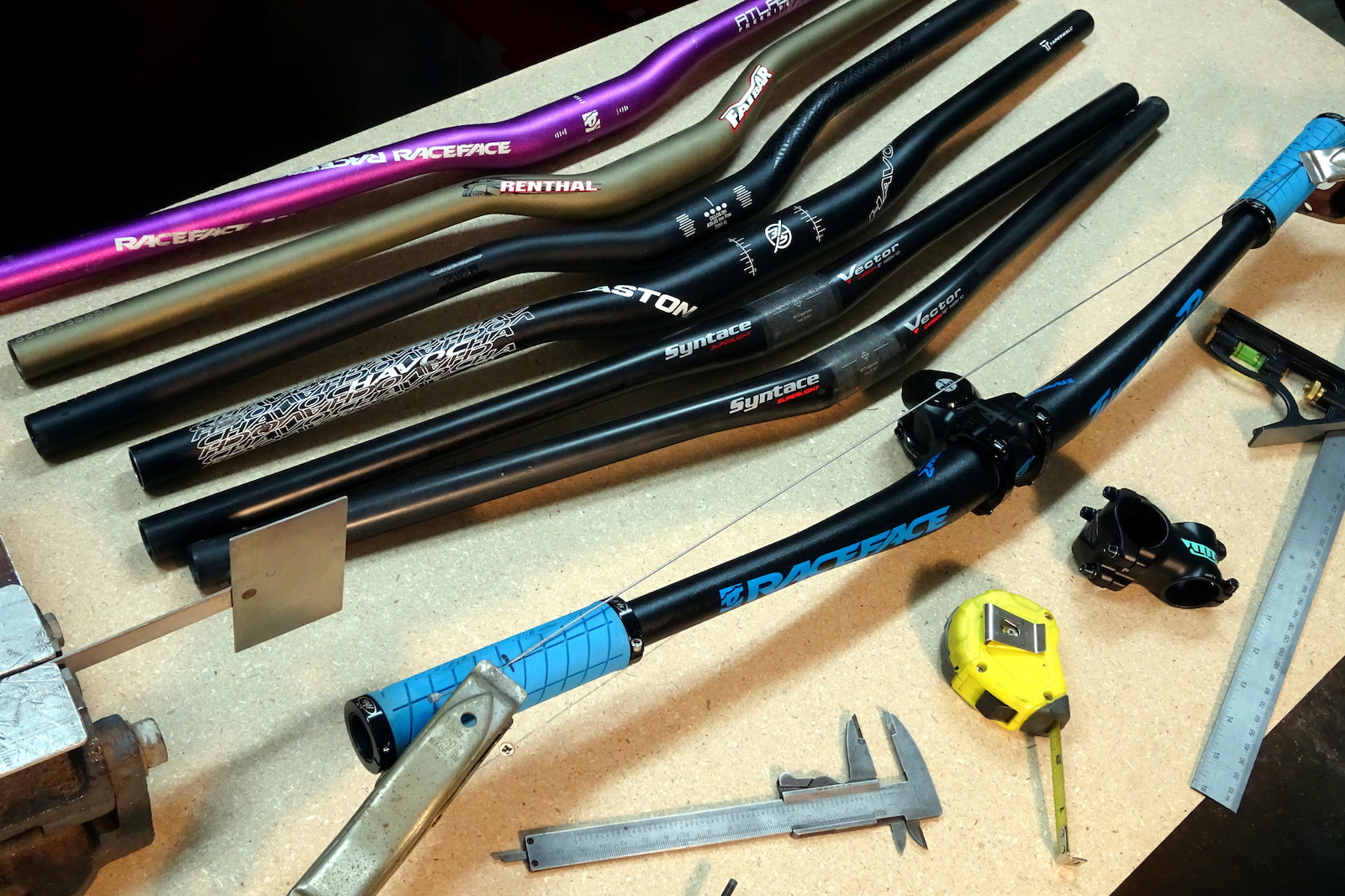
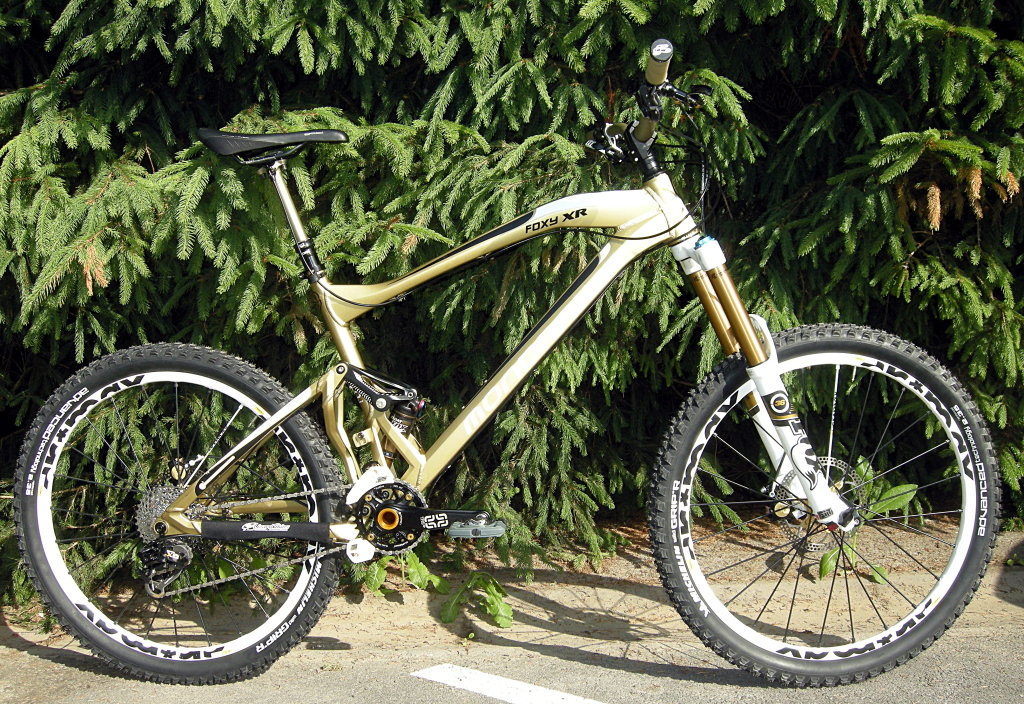




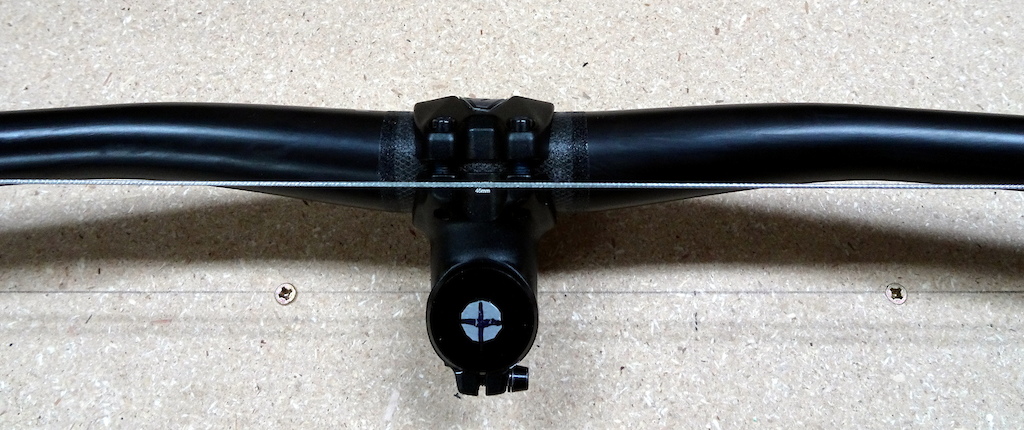


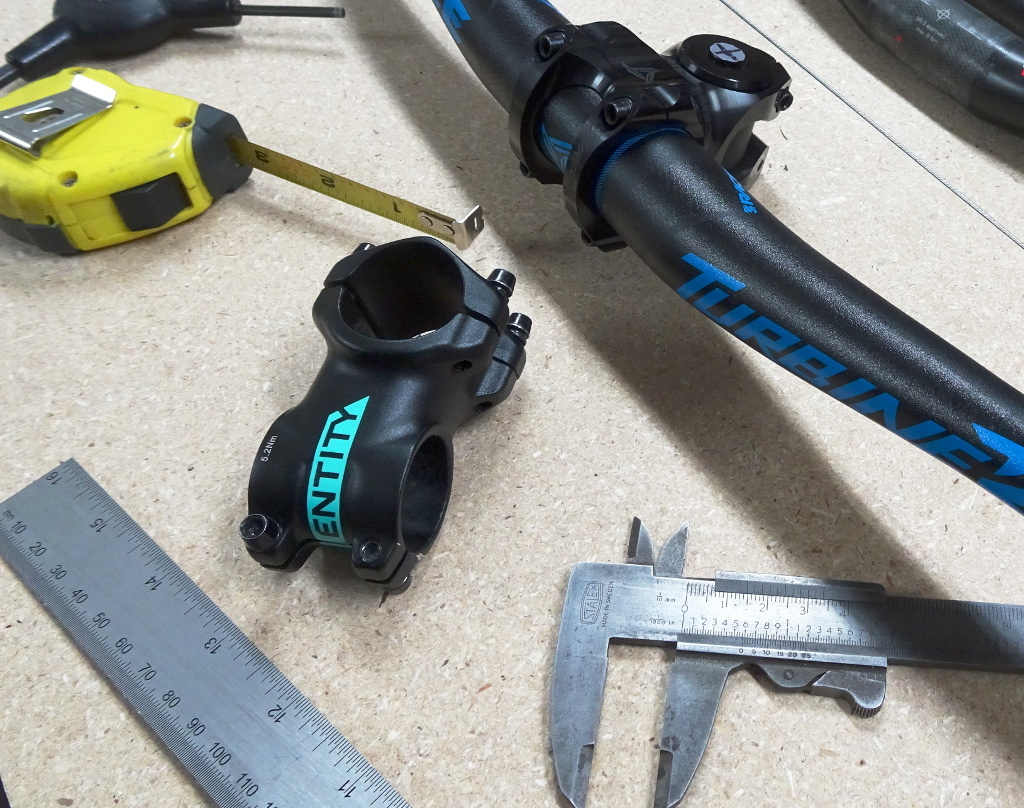
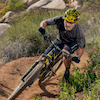
And only then, go ride it.
(bike noises that is)
www.nature.com/news/the-bicycle-problem-that-nearly-broke-mathematics-1.20281
www.pinkbike.com/u/leelikesbikes/blog/dialing-in-your-steeringhands-offset.html
I'd rather just skip RCs article if I know there is an expert article available already. It is a lot of information already, no need for extra noise.
Who's to say that person A likes quicker, more unstable steering and person B, C, and D likes the opposite. 'Bike fit' is completely based on the rider. No 'bike fitter' is going to tell me I should make adjustments because according to his/her calculations, it's the 'perfect' position for someone of my height and weight. Bike fitting is nonsense. The rider should be the one doing his/her own bike fit.
Bike geometry itself are tradeoffs between two extreme ends of the pendulum. At the end of the day, the rider needs to figure out which is important to him/her adjust their bike accordingly. No amount of measuring tape, protractors, and yard sticks is going to tell me that.
Hear, Hear! Especially for mountain bikes.
How steep are your climbs? How steep are your descents? How much time do you spend on the flats? Do you want to trade climbing performance for descending performance? Do you climb out of the saddle or seated? Is your brake lever on your fingertip or is it at your 2nd joint? Do you like your wrists straight or rolled back a bit? Etc, etc.
what else is this Chiropractor showing your ex-wife?
*except for your president maybe
A( Real Family Docto)r usually knows shit about the human anatomy they are programmed to push pills.
Also Famly GP's usually know shit about drugs so best ask your Pharmacist about the drugs your GP has specified.
"Steering Axis
Needs to be as direct as possible. For most mountain bikes this means super short stems. It is not so much the short stem that is important but the resulting hand placement relative to the steering axis. A stem with a 32mm reach on a 780mm bar with normal sweep gets you pretty close to being in line with the steering axis of the front fork. being in front of the steering axis in the old days especially with shorter bars and long stems is what gave us the feeling of wheel flop and the horrible jack-knife scenarios."
"Wide bars
I think we have already pushed this one too far. I just don't see the mechanical advantage of going past 800 for most people or even 780. I go a bit less than this, but only because my local trails are a bit too tight for super wide."
"Lower bars
The long front-centre gives you so much more stability and less chance of pitching over the bars, you no longer need to have a high hand position. I can see a real return to wide flat bars, with "riser" bar looking dated real fast. Slacker head angles helps lower the bars. It will be interesting to see what people do to keep bars low enough as the forks get longer and longer.
Frame design and straight down tubes. I'm so excited from a structural point of view to be returning to straight downtubes. With a long front-centre and slacker head angle, I no longer need to use kinked downtubes for fork crown clearance. This is so much stronger."
I don't say the author is wrong on all points but I have at least a different opinion about 29+ tires: the rollover ability is definitely here but I found them really heavy to accelerate and never found a pressure where I was neither hitting my rim way to often or bouncing around...
Nice to read many people expressing their views about bike geometry and bike fit. There has been quite a few recently.
(effective stem length)=(listed effective stem length)*(sin(head angle)).
Unfortunately they don't specify negative reach either and I don't know how everyone seems to measure rise differently. The 12° 3OX I got for a new bike turned out to have significantly more negative reach than the 12° Syntace Vector on my other bike. Both measure 780 mm wide. It's also virtually impossible to tell a difference between the SQlab's 30 mm rise and the Syntace's 20 mm (which might come down to a difference in upsweep). Anyway, it shouldn't be that much of a guessing game.
I'm probably all that's wrong in the world to you eh?
www.peterverdone.com/actually-youre-not-a-bike-expert
I read the comment differently.
My bikes use forward geometry concepts as I've written extensively about. Take a look at the blog. There's a lot there to help you figure out your own bike geometry.
So actually very short stem and bar backsweep setup can cause instability due to force applied directly on head axis.
Please @pvd666 confirm if I'm right.
You're off. The fore/aft position of the hand grips relative the the head axis is completely irrelevant to the handling. The article is completely wrong in it's premise. In design, we really don't care about the stem, or axis, or bars...as long as we can place the hand grips where we need them.
The steering axis isn't a consideration for placement of grips.
What I really want to know is how I position my bars / stem etc.
www.peterverdone.com/bikecad-pro-17-5-and-bikecad-free-17-5
You can see how I approach that on my wife's recent bike.
www.peterverdone.com/bikecad-pro-17-5-and-bikecad-free-17-5
www.peterverdone.com/suckered-by-junk
Is there a relation between the two?
Fork offset does something else than modifying trail value?
You can say something about the bike only looking at trail value?
Obviously offset and "stem" both affect steering. But there is no relation between the two that gives an idea of how the bike will react.
effective stem lengh gives a stable position (the center of the bar being the furthest away from COG). Increasing the effective stem lengh will increase potential energy (at a given position of COG), increasing in turn the (really tiny) "stiffness" of the steering from this position.
Trail value in relation to wheelbase and wheel radius, will give another stable position of the steering, depending of the lean angle. It creates a relationship between lean angle and cornering raduis. that's what keeps you upright and it allow you to keep your COG more or less between your two wheels when cornering.
Because of these two points, you only have to lean your bike (fitting the stable cornering radius and the corner you are riding) and more or less push on the bar (aligning your COG with the front wheel, outer pedal down and elbow out helps) to corner, rotating the bar is only required for minor corrections. There goes bar width but it's another chapter.
So, as there is two different things happening, effective stem lengh and offset (in trail value) being separately involved, in no way you can find a relation between the two.
Lees conclusions however where that for his light hands heavy feet style hand position at steering axis provided the most neutral and flexible setup since you are neither stable nor unstable.
He is right about handlebar setback though.
We can go on and on.
As an example, nothing to fault bike frame manufacturer because they use average Joe body type for which frame you should get.
I am 5’5” on a Medium Rocky Mountain Altitude with 35/770 stem/bar combo. Feels awesome! I tried the Small Altitude with 45/780 combo. Felt very unstable and frighteningly dangerous. FYI, at my height, RMB puts me between an XS/SM Altitude.
Again, experimentation. Remember 3 things if you are an intermediate to advance rider...
Feels:
1. It sucks / scary
2. It’s OK
3. Great / Awesome!
Experienced friends or coaches can help with determining this feeling.
My seat is pretty much level with my stem at pedaling height. 125mm dropper if you care.
Pedaling Innovation Catalyst pedals.
Food for thought...
Of course all bike measurements are important.
Now what I don't see is how our body shapes are rarely taken in consideration.
Take two guys with the same height but one has long limbs and short torso and the other one has short limbs and long torso, and you have two completely different set ups.
Same thing goes with how your feet are shaped and turned, and also how your hands and writs are shaped.
Depending on the shape of the handlebar you may be putting pressure on the outside (hypothener) or on the inside (thener) of your palm and therefor inducing pain.
As for stem length and handlebar width it's all about feel
COSINE ERROR!
Not that it matters since all of the measurements are taken at the same "headtube angle", but what matters in theory is the distance to the axis of rotation, not the horizontal distance.
One more thing to note is that, at a given backsweep, a higher rise bar will increase the ESL, because the extra rise is in the vertical plane and the steering axis is tilted back (the head angle). Getting the same rise by adding spacers will preserve the ESL, while increasing bar rise will increase it. So if you run a 40mm rise Renthal bar, you're increasing your ESL dramatically.
Ugh I’m that hater today... but you really only discovered this concept now?...
And this article on NSMB with making a case for 16 back sweep is just plain madness.
As a counterargument to your "no article can help you with your injury," I will mention that over the summer I developed wrist pain from riding that was severe enough to stop me from riding for several weeks. I read the NSMB article you were quick to disparage, bought bars with 12* backsweep, and voila I can ride again.
Sure, no article can capture the perfect setup for everyone. But to stop trying to quantify what works for modern mountain bike fit entirely, and go just based on "try a lot of setups" is clearly garbage that most people will not be able to afford.
Not a big deal.
@Paxx - look at a DJ bike. Then look at a XC bike. Then look at a DH bike. Come back to me when you find great bike fit for each of these... the differences in reach and stack are around 5-10cm. And some dumb mini adjustment in stem and bar will cover up for that? Yeah right... so yes there is a place for bike fit in MTB. It is called bike packing. Or fat biking.
Most importantly all these pitiful considerations of RC lack mentioning and thus understanding of biomechanics. Go take a curl barbell (you know, one that has many bends on it), put your hands in bends as if you would a handlebar with bigger sweep and try bench press your max with it. Good luck! Don't forget to bench press with normal bar though... Putting pressure on front wheel, ability to shift your weight over the bike?
But there are some basic rules which you can understand and measure and then you can reduce the number of trials required dramatically. You always have to check a few configurations by yourself though
Now even on those types of bikes, when you are up out of the saddle, then yes, you're correct, the fit matters less and the "practiced patterns of movement" will be more important. I don't think many people have fit issues when standing and going through a dynamic range of movement on the bike.
Most people that are interested in having a bike fit done are probably trying to find comfort while seated. I think that a lot of people ride in pain (even experienced riders) because they don't know how a bike should fit with their own body measurements.
I once stripped the cam journal cap taps during a valve clearance check on my SV1000, because I trusted a torque wrench that was not calibrated correctly. Lost a pair of underwear but I was able to helicoil it. Never again.
Is it worth losing stable steering (eff. stem-length) for the benefits of body-positioning or not?
Try a smaller frame size to utilize same stem that you have or even slightly longer.
And go from there.
No amount of thinkering with cockpit setup will help if you are in the wrong size frame.
My humble opinion (and trial and tribulations)
I have Syntace 30 mm stem with Syntace Vector 12 deg, 20 mm rise - so my worst setup can have - 8 mm effective stem length (or even more because my steering angle is 64,5 deg).
@RichardCunningham Have you measured Syntace Vector 780 mm, 12 deg, 10 or 20 mm rise?
www.syntace.com/en_GB/products/handlebar/mountain-bike/616/vector-carbon-superlight-high-10?c=84
or
www.syntace.com/en_GB/products/handlebar/mountain-bike/618/vector-carbon-superlight-high-20?c=84
most of the people will not notices +- 1 sm of effective length, however on edge cases, using too long / short frame sweet spot could be found
Surely we've missed that important info? Or I have?
Or, was his stem bar combo set to 15mm in Front of axis? It doesnt read that way.
That everyone was running shorter stems that they thought, back to the fishing pole stem lengths right nowwwwwwwwwww!!!!
Though similar, that isn’t a German flag by PauRexs name so there is the possibility that he is joking.
Of course all these forces are in a delicate balance to each other, but looking at this one number in isolation is perfectly valid.
Fork offset is not defined by wheel size and head tube angle, but dictated by it. Meaning, in order to get a proper figure for trail, you need a certain fork offset - depending on wheel size and headtube angle.
Fact is, fork offset is creating a force due to a different mechanism than handlebar offset, so it is not correct to try and correlate these two. The proper approach is to evaluate handlebar offset in isolation from fork offset and trail. Rather, what has a more significant impact is reach. With a higher reach, you will need a lower handlebar offset, otherwise the bike will be incredibly difficult to steer - even with a low trail figure. And if you don't have any handlebar offset, it will be difficult to keep the bike straight, even with a extremely long trail figure.
The point is that handlebar offset always creates a centering force (torque, actually) on the steering, irrespective of the leaning angle of the bike. Trail, in contrast, creates a force that wants to turn the bike upright with the relation to the ground. Which is a huge difference once the ground is not flat anymore: If you're riding an off-camber section, trail will cause the bike to steer uphill. Handlebar offset will keep the handlebar straight, greatly inceasing control in this scenario. It also increases stability under hard braking; here, the trail figure decreases dramatically (due to the compression of the fork and concurrent lifting of the rear suspension, the headtube angle gets a lot steeper). Simultaneously, the deceleration puts a lot of pressure on the handlebar - which in turn keeps the bike going straight due to handlebar offset.
The impact of wheel inertia is tiny in comparison - otherwise, stunts like whips or tabletops wouldn't be possible.
The force to create any steering angle will differ massively. Draw a sketch. And apply technical mechanics. Your tool does not work correctly.
In my mind the most important factors on steering are trail and stem length. But not backsweep...
Next January will feature an article about why super stubby stems & extra wide bars are the best way forward and how we all have to switch.
Keep trying to disguise marketing BS as articles. I keep losing respect for this site. What a f*cking joke.